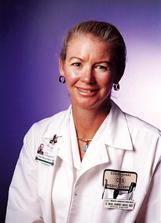
Daniel S. Berman, M.D., FACC is chief of cardiac imaging and nuclear cardiology at the S. Mark Taper Foundation Imaging Center at Cedar-Sinai Medical Center.
Atherosclerosis is the leading cause of cardiovascular disease (CAD), heart attacks and death in both men and women in the United States. However, advances in diagnosing and treating coronary artery disease treatment have concentrated on lowering mortality rates in men and less so in women.
The under-representation of women in clinical research has resulted in an insufficient understanding of symptoms of CAD in women. Subsequently, many women who die suddenly from heart disease have no previously recognized symptoms.
Recently, there has been growing awareness for a gender-specific approach to diagnosing and treating cardiovascular disease in women. The medical community has responded by initiating new clinical studies investigating the progressive accumulation of plaque in women, and establishing specialized clinics dedicated to women’s health issues, such as the Advanced Preventive Women’s Clinic at the Women’s Heart Center at Cedars-Sinai Heart Institute.
Recognizing the Signs
While women share the same classic symptoms of cardiovascular disease as men do, they also may present with atypical symptoms, particularly women who have angina, which may not manifest as chest discomfort but as a hot or burning sensation, a tenderness to touch, in the back, shoulders, arms or jaw. They may lead a doctor to overlook CAD and result in misdiagnosis.
Daniel S. Berman, M.D., Chief of Cardiac Imaging and Nuclear Cardiology at the S. Mark Taper Foundation Imaging Center at Cedars-Sinai Medical Center, and a leader in cardiac imaging research, identifies a need for screening seemingly asymptomatic patients.
“Although women have classic heart pain symptoms just like men do, many of them perceive their discomfort very differently. It’s not the classic heart disease symptoms that doctors are trained to look for. Knowing that, there has been a tremendous increase in the recognition of how commonly women have heart disease now, and doctors are much more tuned into that than they were several years ago,” indicated Dr. Berman.
“Classic chest pain is below the breastbone, it comes on by exertion, and it’s relieved by rest. Men can have that classic symptom more than women do. Women wouldn’t have all of those components of the pain. It might be in a different location, they might feel shortness of breath rather than chest pain, and they could just be tired,” he said. “There are many different symptoms, and they are not specific; they could be from a variety of different things. So doctors have to be more aware that heart disease is common in women, and that they don’t always present as clearly as is in men.”
With a catastrophic event — myocardial infarction as opposed to angina — the symptoms may also be atypical.
“Sometimes a heart attack can be thought of as indigestion or it could be arm or jaw or neck discomfort. There are many different ways it can present,” noted Dr. Berman.
C. Noel Bairey Merz, M.D., FACC, FAHA, director of the Women’s Heart Center at the Cedars-Sinai Heart Institute in Los Angeles, uses diagnostic imaging to analyze and understand the chest pain symptoms and the various kinds of presentations that women come in with related to heart disease. “Women compared to men are more likely to experience extreme fatigue, indigestion or shortness of breath. Men compared to women are more likely to experience chest pain or pressure,” said Dr. Merz.
One of the tests that is increasingly used in patients without symptoms, in the early stages of the disease, is CIMT (carotid intima-media thickness) or coronary calcium scanning. “These tests can detect the atherosclerosis process years before it becomes symptomatic, and sometimes you can get patients on the right treatment,” noted Dr. Berman.
“Another technique that we use is cardiac MRI at rest and adenosine stress cardiac magnetic resonance imaging, which is now being used commonly to evaluate whether symptoms are actually due to a decrease in blood flow to the heart or not,” said Dr. Berman. “That part of the discussion brings us to angina with normal coronary arteries. That’s a syndrome that Dr. Merz is specializing in, and the technique she uses predominantly to make the diagnosis is cardiac MRI because you can look at the perfusion and see if it has a pattern that suggests that the patient has normal large arteries or an abnormal or vasal activity of the smaller blood vessels — microvascular disease.
He added, “A very large majority of the heart attacks that occur could have been prevented if we knew the patient had heart disease. Whether they are men or women, we don’t know until they end up with a catastrophic event.”
RED HOT Research
Motivated by a desire to understand why sudden heart attack death claims the lives of women under 60 at twice the rate of their male counterparts, Angela M. Taylor, M.D., an interventional cardiologist at the University of Virginia Health System, is launching a unique heart attack study that will color-code and measure plaque deposits inside the coronary arteries of male and female patients between the ages of 18 and 50.
“Most women who die suddenly from heart disease have no previously recognized symptoms. Even when they are diagnosed with CAD and given the same treatments as men, premenopausal women are twice as likely to die from heart attacks. This tells me we’ve missed something extremely important when it comes to understanding how heart disease develops in women,” said Dr. Taylor.
A specialist in cardiac catheterization, Dr. Taylor believes that missing information lies within the important, yet clinically unrecognized differences in how men and women accumulate plaques within their coronary arteries and what causes that plaque to be vulnerable to disruption. Dr. Taylor is launching a two-year study called RED HOT, funded by Volcano Corp. The study will involve male and female patients admitted to UVA with acute coronary syndrome (ACS), which includes severe heart attacks and unstable angina. Ultimately, her goal is to open the doors to the development of more effective treatments for women with ACS.
Dr. Taylor will use virtual histology-intravascular ultrasound (VH-IVUS), optical coherence tomography (OCT) and specialized software to conduct her research. Specifically, she will use ultrasound to identify the types of plaque (fibrous, fibro-fatty/lipid-rich, necrotic core and dense calcium) that have built up in each patient’s arteries. At the same time, she will generate images of the luminal surface and locate areas where plaque has eroded or ruptured using OCT imaging. The software will then assess the images, measuring and calculating percentages of each type of plaque present.
“The most unique aspect of this study is the use of OCT, which is a promising new technology being used in a select number of research applications,” Taylor explained. “When combined, the real-time visualization capabilities of OCT and VH-IVUS will help us characterize important differences in men’s and women’s plaques.”
Recent research1(Burke AP. Circulation. 1998;97:2110-2116.) has shown that significant differences exist in the amount of plaque that men and women accumulate in their coronary arteries. Women often build up larger amounts of plaque than men and experience symptoms and adverse cardiac events before current diagnostic methods detect problematic plaque levels.
Another recent finding (Opatil S. Circulation. 1998;97:2103-2105. ) is that ACS often develops in younger women when areas of fibrous plaque erode. By contrast, men tend to develop ACS due to ruptures in lipid-rich areas of plaque. “During the past several years, the medical research community has learned a lot about how heart disease develops in women,” Dr. Taylor noted. “But, mortality rates remain higher in women, indicating we still have a lot more to learn.”
Women with Menopausal Symptoms
Menopause marks an important time for women to assess their risks for heart disease as a woman’s LDL levels typically increase.
The recently opened Advanced Preventive Women’s Clinic at the Women’s Heart Center offers comprehensive cardiac risk assessments designed specifically for women who are in menopause. “This clinic is designed for women who are at higher risk for heart disease and who are seeking to treat their menopause symptoms, while simultaneously taking steps to prevent heart problems,” said Chrisandra Shufelt, M.D., assistant director of the Cedars-Sinai Women’s Heart Center. “Menopause is a time to assess your heart health so that the next chapter of your life can be as productive as your youth.”



 December 15, 2025
December 15, 2025 









